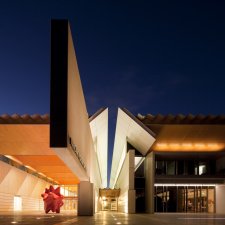- About us
- Support the Gallery
- Venue hire
- Publications
- Research library
- Organisation chart
- Employment
- Contact us
- Make a booking
- Onsite programs
- Online programs
- School visit information
- Learning resources
- Little Darlings
- Professional learning
Edmond John (Ned) Hogan (1883-1964), farmer and premier, left school early and engaged in road-making, timber-cutting, farm-labouring and rabbiting in addition to farm chores at home. In 1905 he went to Western Australia, where he became involved in the formation of the Kurramia Firewood Workers' Union; as its secretary he was prominent in industrial negotiations in the strikes of 1908 and 1911. He was vice-president then president of the WA goldfields Social Democratic Federation in 1910-11 and was Social Democratic delegate to the Australian Labor Federation. In 1911 he became secretary of the Kurrawang Firewood Workers' Union. In 1912 he contracted typhoid fever and pneumonia and after a long battle to regain health he left the goldfields – where he had been a champion athlete – to recover in Victoria. During his visit home the local State electorate of Warrenheip came up for by-election and in 1913 Hogan won the seat for Labor; he held Warrenheip (Warrenheip and Grenville from 1927) for the next thirty years and became a farmer at Ballan. A Catholic and a pacifist, he was active in the anti-conscription campaigns around the Ballarat area in 1916-17. At the 1922 conference he was elected president of the Victorian branch of the Labor Party. In 1924 he was minister of railways, agriculture and markets as well as vice-president of the Board of Land and Works in the short-lived Prendergast Labor government. In 1926 he became leader of the Labor Party in Victoria; when he became 30th premier of Victoria in May 1927, Labor held only 28 of 65 seats in the assembly, but was supported by Albert Dunstan and the Country Progressive Party. In November 1928 his government was defeated on its handling of the Melbourne waterside workers' strike, but the McPherson ministry collapsed in October 1929; at the election two months later Labor won thirty seats and Hogan again formed a government. His second premiership, supported again by the Country Progressive Party and after September 1930 by the reunited Country Party, spanned most of the worst years of the Depression. Suffering bouts of nervous illness and collapse, in March 1932 he went to England to recuperate, but in the election of 14 May Labor was crushed. Hogan cabled his resignation as premier from London on 16 May; in July he was excluded from the Victorian branch of the ALP for having supported the Premiers’ Plan to cut government expenditure. Returning home in October, he issued a Supreme Court writ against the central executive over his expulsion, but lost the long and bitter case. In 1935 he joined the Country Party under Dunstan, the 33rd premier of Victoria. He was minister of agriculture and mines and vice-president of the Board of Land and Works from April in Dunstan’s government, which, supported by Labor, lasted until September 1943. Hogan was chairman of the Soil Conservation Board from 1945 to 1953.
Collection: National Portrait Gallery
Purchased 2012



On one level The Companion talks about the most famous and frontline Australians, but on another it tells us about ourselves.



Visit us, learn with us, support us or work with us! Here’s a range of information about planning your visit, our history and more!



We depend on your support to keep creating our programs, exhibitions, publications and building the amazing portrait collection!